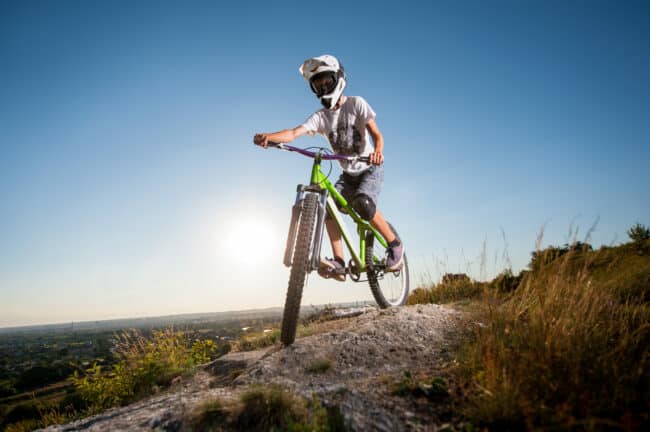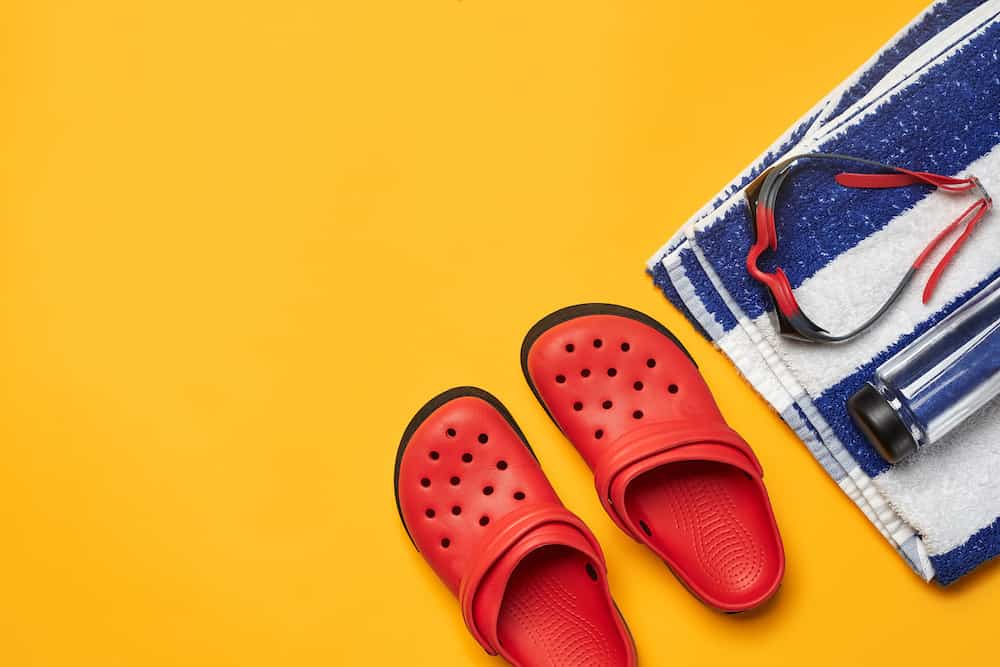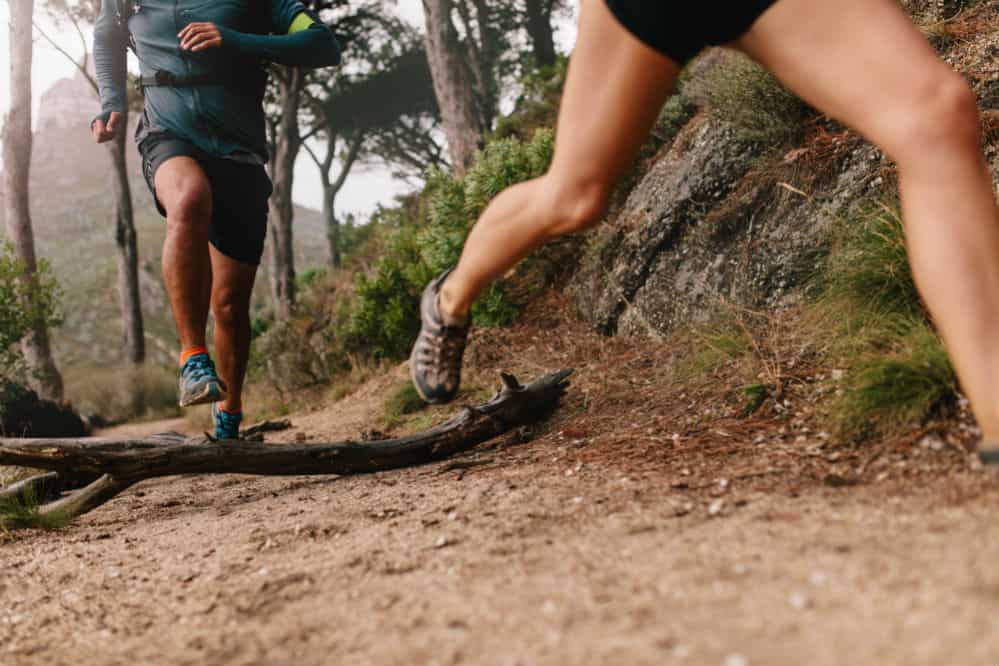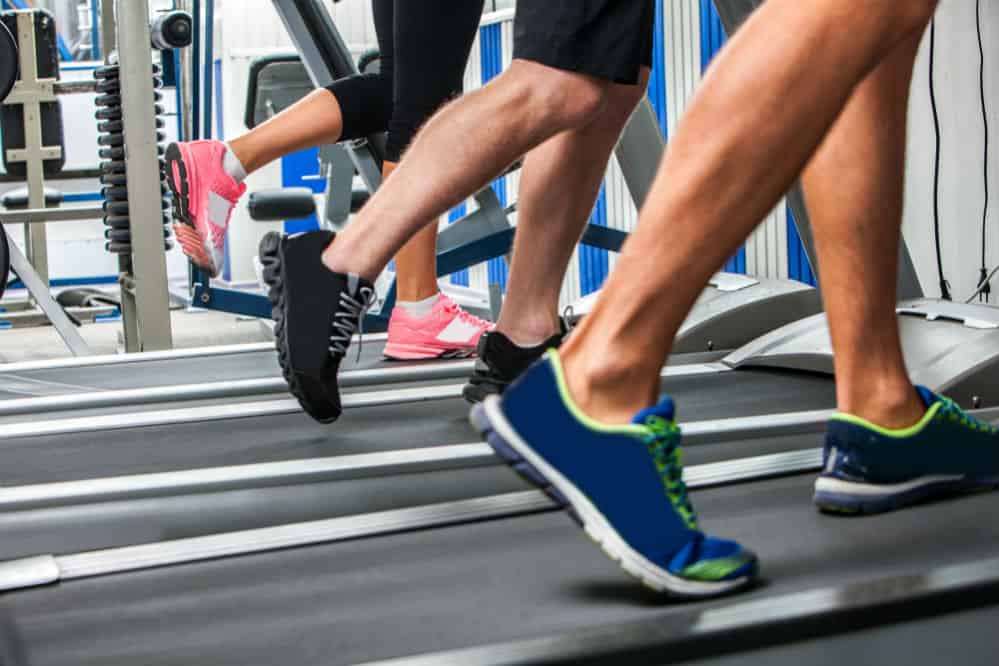https://sportssend.com/5-best-mountain-biking-helmets-on-amazon/There is no question that full-face MTB helmets ooze a touch of class. They have appealing designs, and their durability is unmatched. Full-face helmets are here to stay as the ‘go-to’ helmets for riders participating in extreme downhill rides like the Enduro World Series (EWS).
However, are full-face helmets overkill or unnecessary? This is an age-old question that seems to raise more questions than answers. Hence, we try to settle this debate by thoroughly scrutinizing their functionality and safety.
Here we go…
Do Mountain Bikers Need Full-Face Helmets?
No one can deny the significance of safety in mountain bike excursions. Is a full-face helmet necessary for mountain biking when most riders use an open-face helmet instead?
When it comes to the majority of mountain bike trips, full-face helmets are not essential, particularly if you like cross-country riding. However, you should use a full-face helmet for protection if you wish to participate in more demanding downhill rides.
Why Aren’t Full-Face Helmets Necessary for Trail and XC Mountain Biking?
The first advice that any experienced rider would provide to a novice mountain biker is to always wear a helmet. That’s because, no matter where they may be cycling, mishaps and crashes can happen at any moment.
The open-face helmet and the full-face helmet have been proven to offer protection. However, the terrain and riding style determines what helmet a rider needs to choose.
Do you need to wear a full-face helmet if you like to cycle cross-country (XC) on flatter terrain or on trails that may be rugged but aren’t very dangerous? The answer is “no.” Some riders disagree, saying that full-face helmets protect more areas of your head, including your face. They say that open-faced helmets make you susceptible to face-first impacts with the ground or any other barriers when you crash.
There is an element of truth to these claims. No one wants to safeguard their head from bumps, bruises, and concussions but leave their face exposed. However, research indicates that the probability of a rider’s face on even terrain getting bruised during a crash is very low.
Therefore, don’t feel shy about wearing an open-face helmet if you’re going to participate in cross-country championships or trail events.

Are Full-Face Helmets Ideal During the Summer?
Full-face helmets can get relatively hot, particularly in the summer. This is because they are not well ventilated, therefore, air cannot travel through quickly and keep your head and face feeling cool.
Poor ventilation causes heat to build up within the helmet, which makes it harder for you to concentrate on your rides. If the summer heat becomes unbearable on the open road, this might result in accidents, dehydration, or even heat stroke.
Also, you need to remember that full-face helmets are larger and heavier. Hence, they can make riders uncomfortable, especially those riding for many hours on a cross-country mountain bike journey. There is a possibility that the additional weight and mass might result in severe neck injuries in an XC or trail bike accident.
Finally, full-face helmets might also interfere with your peripheral vision, making visibility a problem. Therefore, you may not find full-face helmets ideal during the summer.
Where Do Full-Face Helmets Trump Their Open-Face Counterparts?
While we did state that full-face helmets aren’t required for XC and trail riding, the following are some benefits they offer over open-face alternatives:
- Full-face helmets are produced under more stringent regulations. This implies that because full-face helmets are tested to verify their safety, you will less likely encounter one that is inferior.
- If you crash face-first, a full-face helmet will protect your face. This may not happen in cross-country or trail biking, but it occurs in downhill biking since you’ll navigate steep trails and roads.
- Some full-face helmets include added features that make them safer. These include anti-rotation capabilities and ventilation systems. The former will stop your head from jerking or rotating in odd directions in the event of a collision, while the latter compensates for the loss of airflow.
If the above resonates with you, be sure to check out our article on the best full-face helmets for you.
Why Are Full-Face Helmets Necessary for Downhill Mountain Biking?
The importance of full-face helmets in downhill mountain biking cannot be overstated. As we’ve mentioned, most downhill incidents subject the rider to face-first impacts. Hence, donning a full-face helmet will decrease the odds of injuring your chin area and face when you crash.
Also, ventilation and helmet weight are non-issues in downhill riding. First, you can rack up more speed while pedaling, guaranteeing better airflow. Second, gravity will help you as you descend, making it less challenging to pedal the weight you’re carrying.
Do You Need a Full-Face Helmet for EWS Biking?
Enduro mountain biking combines many diverse elements of mountain biking. And a significant portion of enduro is riding downhill.
It implies that you will eventually descend through challenging slopes that might harm your face if you have an accident. In light of the hazards associated with enduro biking, we definitely emphasize that full-face helmets are almost a requirement.
Because the downhill descent increases the likelihood of a face-first collision, a full-face helmet becomes hugely important and, in some cases, obligatory in enduro competitions.

How Safe Are Full-Face Helmets?
Indeed, full-face helmets are safer. They are made for downhill riders who accelerate at top speeds, with more significant ramifications. Initially, full-face helmets were adopted from motocross helmets. These motocross helmets demand a lot of protection since the rider races at very high speeds.
Below are three reasons why no one cannot question the safety of full-face helmets:
- Strict Standards and Testing
Downhill and your usual all-mountain helmet have different certifications. All helmets in the U.S. should meet the CPSC standards. There’s also the downhill certification ASTM F1952-15.
Note: The downhill certification is necessary for all full-face helmets. However, some helmets can be downhill certified without being full-face!
For instance, the Bell Super 3R is not downhill certified but is a full-face helmet. On the contrary, the Giro Tyrant is downhill permitted but is a half-shell helmet.
- More Coverage
Full-face helmets have more padding around the rear and above the ears. They also have a chin bar, which prevents your face from getting injured in case of an impact. There are many confessions of riders wishing they had donned a full-face helmet, as it would have prevented facial damage. On the other hand, there are also rider confessions about full-face helmets coming to their rescue during a crash.
The extra coverage protects large areas of the head from accidental knocks and hits from sharp objects. A full-face helmet also significantly reduces the odds of a rider getting a concussion.
- Additional Features
Anti-rotational technology of various types is fixed in all modern full-face helmets. They decrease the rotational energy (which can harm your head) generated from an angled fall. Generally, this is attained by the outer shell spinning when you fall.
The anti-rotational technologies to keep an eye on include:
- Turbine 360,
- SPIN, Koroyd, and
- MIPS.
Some anti-rotational installations decrease the linear crash impact as well. This is on top of what the EPS foam cushioning provides.
A relatively recent invention, dual-density foam consists of two foam layers with varying densities. The outer layer makes it more difficult for sharp objects to penetrate and will also absorb more energy during a high-speed collision. The inner foam cushion is thinner for a more “cushioned” fall. It lowers the risk of concussion.
Dual-density helmets are gaining popularity. When buying a full-face helmet, you should consider this innovative technology.

So, is a Full-Face Helmet Overkill?
When pedaling on an easy or intermediate path, wearing a full-face helmet may sometimes seem overkill. Accidents occur, however, and they often do so quickly and without warning. A twig in the spokes or a blow to the handlebars might cause you to fly off the bike. If you’re a newbie, you can’t plan for these situations. So, wearing a full face may save you a lot of trouble.
However, if you conclude that the danger is minimal and you’re at ease, wearing a full-face helmet is likely overkill. Low speeds make a full-face helmet hot and unpleasant. But if you think there’s a good chance you’ll crash and get injured; it’s probably worth it.
A full face is required while leaping, launching drops, riding quickly, or negotiating hazardous terrain. Without your downhill helmet, you could even seem out of place in a bike park. Simply put, a full face is essential if you are venturing outside your comfort zone.
People Also ask
- Can I Use My Ski Helmet For Mountain Biking?
Helmets for skiing and snowboarding are designed to keep your head warm and protect it in the event of accidents at faster speeds. In light of this, ski and snowboard helmets may be worn as bike helmets. However, you could experience extreme overheating when riding.
- Do Bike Helmets Expire?
Although a bike helmet has no expiry date, it should be changed every five years. A bike helmet should also be changed after a mishap or if you notice any cracks or flaws.














I agree that full-faced helmets are the better option for safety, no matter what type of terrain you are riding on. My friend suffered a very bad concussion when she face-planted into the pavement on a normal road ride. She had a helmet on that only protected the top of her head. She would probably not have been injured so badly if she had been wearing a full-face helmet. She even had to have a skin graft.
Hi, Michel Maling, and thank you.
Thank you for your kind words.
Yes, it is always some factors you need to have in mind. Like where are you cycling, how is the place, are you going downhill often, etc.
You could be interested in this post here. It is more about safety and some ideas too.
Great to hear about your benefit of the article too.
Don’t hesitate to contact me to help you with anything else or if you have any questions.
I cannot disagree that safety should be at the forefront of any cyclist mind when setting out on their next ride. The choice of helmet does pose a number of questions to each individual rider, does the fit feel comfortable? Will it offer sufficient protection for the terrain I will be riding over? Which one looks best on me? Will I be able to use this in all weather conditions? After the cyclist finds an answer to each of these then they will make a purchase.
I would be curious to know how long it would take to acclimatize to a full face helmet if you switched over to this after using an open-faced helmet for the entire time you had been cycling? Should I drop the cycle times down significantly to build up a level of comfort with the full face helmet design?
Hi, Danny, and thank you.
Thank you for your kind words.
Yes, it is a key question you have here, and I believe most cyclists are quick to find the answer for themself.
About your question, it is no need to drop your training. I am sure that you will be quick to get used os it.
If you like, here are some great helmets to look at!
Great to hear about your benefit of the article too.
Don’t hesitate to contact me to help you with anything else or if you have any questions.